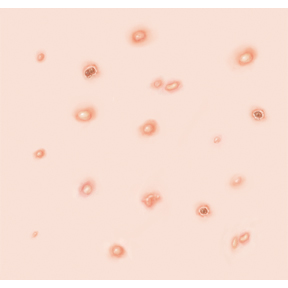When Your Child Has Chickenpox
When Your Child Has Chickenpox

What causes chickenpox?
Chickenpox is caused by the varicella-zoster virus.
What are the symptoms of chickenpox?
Symptoms can appear 10 to 21 days after exposure. The following symptoms usually occur before the rash:
Fever
Tiredness
Muscle aches
Loss of appetite
The rash usually occurs on the face, chest, and back. It begins as small, red bumps that turn into blisters. These blisters then crust and scab over.
How is chickenpox spread?
Chickenpox can be spread in the following ways:
Through direct contact with the rash on an infected person.
Through the air when an infected person coughs or sneezes.
Through direct contact with the rash on a person who has shingles. (This is an illness caused by the chickenpox virus. It affects adults who have had chickenpox.)
How is chickenpox diagnosed?
If you suspect that your child has chickenpox, let your healthcare provider know before your child’s appointment. This is to reduce the risk of spreading it to other children at the provider's office.
Chickenpox is usually diagnosed by how the rash looks. Your healthcare provider will examine your child, ask about your child’s symptoms and health history. A blood test may be requested to confirm diagnosis.
How is chickenpox treated?
Chickenpox generally lasts about 7 to 10 days.
Your child is contagious even in the period before the rash starts. He or she should not attend school or daycare until the blisters caused by the rash have crusted over.
You can do the following at home to relieve your child’s symptoms:
Give your child over-the-counter (OTC) medicines, such as ibuprofen or acetaminophen, to treat pain and fever. Don't give aspirin to a child with a fever. This can put your child at risk of a serious illness called Reye syndrome. Don't give ibuprofen to an infant who is 6 months of age or younger.
Give your child OTC antihistamine medicine to ease itching.
Apply calamine lotion to the rash to relieve itching. Before and after each application, wash your hands with warm water and soap.
Give your child an oatmeal bath. This can soothe the skin and relieve itching. (Some oatmeal mixes can leave an oily film in the tub. To prevent falls, make sure to clean the tub well before the next person uses it.)
Call your child's healthcare provider if your otherwise healthy child has any of the following:
Symptoms that don't improve within 7 days of starting treatment
A fever that goes away but returns after starting treatment
In an infant younger than 3 months, a fever of 100.4°F (38.0°C) or higher
In a child of any age, a repeated fever of 104°F (40.0°C) or higher
A fever that lasts more than 24 hours in a child younger than 2 years old
A fever that lasts more than 3 days in a child 2 years old or older
A seizure caused by the fever
Rash spreads near the eyes
Rash shows signs of infection (pus or drainage)
How is chickenpox prevented?
A vaccine is recommended for children starting at 12 through 15 months old to protect against chickenpox. Children should return for a second dose at 4 to 6 years old or as directed by your child’s healthcare provider.
If your child is exposed to chickenpox but has not been vaccinated, he or she can still receive the vaccine. This may prevent chickenpox or lessen the severity. The vaccine must be given within 3 to 5 days of exposure to be effective then followed up with a second dose as directed.
If your child is infected, you can do the following to prevent your child from passing chickenpox to others:
Teach your child to wash his or her hands with soap and warm water often. Handwashing is especially important before eating or handling food, after using the bathroom, and after scratching the rash.
Trim your child’s fingernails short to discourage him or her from scratching the rash. Scratching can cause the rash to spread and can lead to scarring.
Keep your child home from school or daycare until the blisters on the rash have crusted over.
Updated:
April 05, 2018
Reviewed By:
Lentnek, Arnold, MD,Sather, Rita, RN